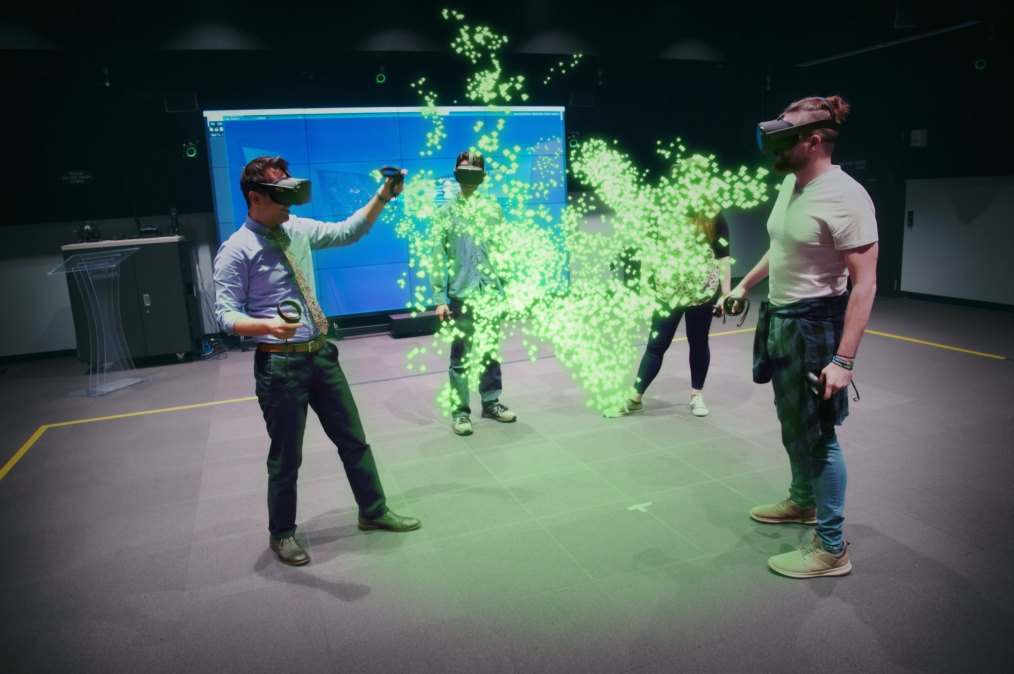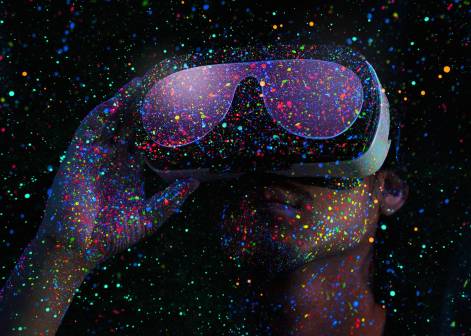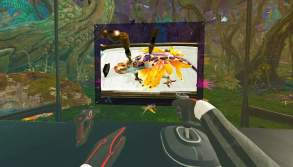VR in universities a welcome addition, but not yet ‘plug-and-play’

The coronavirus pandemic prevented students, professors and administrators from conducting in-person classes and meetings, enhancing the popularity of virtual and augmented reality-based tools on and off campus over the past year.
Professors have used headsets for immersive lessons in nearly every discipline and to train faculty to recognize their unconscious bias when dealing with students from different backgrounds. But despite a growing community of advocates and use cases, professors told EdScoop they believe the technology’s unlikely to be more than a complementary teaching tool for the foreseeable future.
In 2018, the nonprofit group Internet2 conducted a survey of 350 of its university members, concluding that 28% had deployed some VR or AR technology, while another 53% had plans to deploy the technology within the next three years. Three years later, some of the biggest barriers to adoption that survey respondents listed — the prohibitive cost of VR headsets and compatible computer hardware, along with a lack of awareness about virtual learning — have since broken down, said Jeremy Bailenson, the founding director of Stanford University’s Virtual Human Interaction Lab and professor who literally wrote the book on virtual reality’s role in modern pedagogy.
“Two things have massively changed,” he said. “One is that VR has gotten cheaper and, standalone, works. And two, the stigma of virtual learning has now been officially broken due to COVID-19. Now it’s no longer a question of can virtual media replace face-to-face learning in some instances, but the question is what’s the best way to do it.”
‘Learning quests’
Bailenson, who has taught a flagship course at Stanford about the concepts behind virtual reality applications since 2003, said he’s confident that VR has cemented a place in the toolkit of higher education for good. In his 2018 book “Experience On Demand,” Bailenson said he’s able to “psychologically reduce” the size of his class if his students are all wearing VR headsets, because his virtual avatar — existing separately in the virtual reality space of each of his dozens of students — can act as though it’s a one-on-one lesson for each student. If he himself is wearing a headset, Bailenson wrote, he’s able to screen out “distracting student behaviors, like tapping pencils on desks or texting on cellphones.”
“Virtual teachers can transform and adjust on-the-fly. My avatar … can outperform me as a face-to-face teacher any day,” Bailenson wrote, adding a condition that all of his students would be wearing VR headsets as well. “It can pay perfect attention to every student in a class of all 200 or more.”
Bailenson said this summer he’ll teach two-thirds of his flagship course in a virtual classroom, with Stanford University supplying VR headsets to students to use in their dorm rooms. Aside from the meta concept of teaching about VR in VR, Bailenson said, the VR-based aspects of the course will be “awesome for filling in the gaps” of his courses.
“I’m calling them learning quests,” Bailenson said of the VR-based portions of the class, “where for example, the entire class will go to a place and we’ll build something together in VR. Or we will go study avatars in any social VR world. And we’re going to go out and do things in VR together. So that’s just never been an option before.”
No ‘flash-in-the-pan’
Bailenson’s hardly alone in his enthusiasm for meeting his students, who will be taking his course remotely, in VR settings. Professors at universities around the country over the past two years have used VR to create 3D models of exploding stars, predict how forests might look after 30 years of climate change and allow administrative staff to practice recognizing how their racial or gender biases might influence their interactions with students or staff. Other institutions have used VR to simulate real-world environments that students stuck at home during the COVID-19 pandemic might have found in their classrooms, like lecture halls or counseling rooms, or to offer virtual tours of their campuses.
Higher education is beyond the “flash-in-the-pan” stage of VR, said Chip Linscott, the associate director of undergraduate studies at Ohio University. But, he said, there’s still room for the technology to expand as universities and students warm up to the technology.
“Because of the emotion and because of the inner activity and the level of presence you can get in virtual reality, sometimes people feel like that is more impactful or more dynamic,” Linscott said.
Students who use VR for gaming are more likely to push for academic usage, Linscott said, potentially influencing more professors to incorporate it into their classrooms. But, Bailenson said, it’s unlikely that subject matter experts, like physicists or historians, will completely switch a discussion or lab section of their courses to VR. The people who study VR are still the leading adopters, he said.
“I think what you’re seeing is a lot of people who currently use VR in their day jobs and also teach. They’re the ones that are venturing out,” Bailenson said.
Professors won’t easily diverge from their in-person or Zoom-based lecture formats, and without a huge arena of publicly available educational programming to choose from in VR format, it’s unlikely that the technology is going to “outstrip other media for learning,” Bailenson said.
A ‘vital’ teaching tool
Danny Milisavljevic, an assistant professor of physics and astronomy at Purdue University, told EdScoop that creating content in virtual reality can take years, but that it’s often worth the effort.
“I see this as a vital, complimentary way to teach,” Milisavljevic said. “There’s just some topics that cannot be conveyed properly with the traditional lecture format, and this platform provides a way to be able to share those experiences.”
Milisavljevic used VR over the past year to teach his students about supernovas, working with Purdue’s Envision Center, a simulation and computer graphics-focused lab on campus, to create a platform to display his 3D models of exploded stars. It took two years, even with graduate students assisting, he said.
At Stanford, Bailenson said that to create VR-based content for his class this summer, he’s “working his tail off.”
“Everyone’s just trying to figure out how to integrate VR right now,” Bailenson said. “It’s a fun time to be doing it, but I wouldn’t say that there’s good plug and play content yet for higher ed.”
This story is part of EdScoop’s Special Report on Emerging Edtech.




